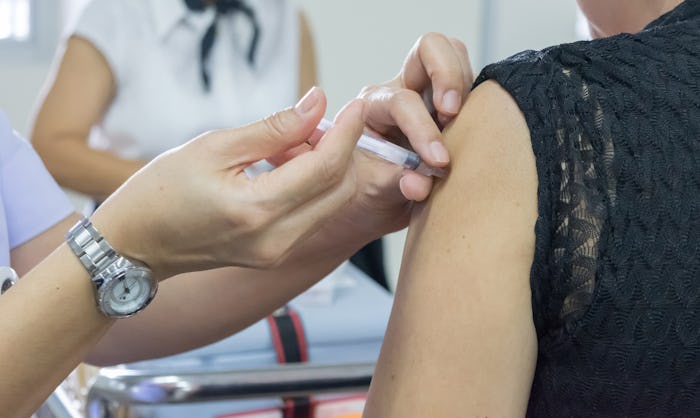Life

How To Get Pregnant After Depo-Provera, According To A Fertility Expert
For women taking birth control, Depo-Provera seems to be one of the most convenient contraceptive choices around. A single injection can give you months of pregnancy protection and you never have to worry about taking a pill. But if you’ve decided to stop your Depo shots in hopes of having a baby, you'll want to know how to get pregnant after Depo-Provera.
The most important thing to note? Ovulation is necessary for you to get pregnant. A Depo-Provera shot, according to Mayo Clinic, contains the hormone progestin, which keeps your ovaries from releasing eggs for about 12 weeks. But the side effects of Depo-Provera, the article further explained, could prevent you from ovulating for 10 months after your last shot.
Fertility expert, Dr. Edward Marut of Fertility Centers of Illinois tells Romper that you should wait at least two menstrual cycles before you start trying. “I advise waiting for the second period after the last dose to make sure it is out of the system and both the ovaries and uterus are functioning well," Marut says.
If you don’t get your period for six months after your last injection, he suggests you speak to your doctor about getting a medical evaluation. “Persistent effects of Depo-Provera on the ovaries or uterus can interfere with normal ovulation or the normal uterine lining, both of which can prevent normal pregnancy.”
While Depo-Provera may be the one of the lowest maintenance forms of birth control, trying to get pregnant after it may get a little tricky. If you are getting normal periods, then it’s a good idea to start charting your ovulation to figure out your most fertile days. If you have not gotten your period, and are concerned about ovulation, talk to your doctor or a fertility specialist, who can help you get back on track, and hopefully on to a positive pregnancy test.
Check out Romper's new video series, Romper's Doula Diaries:
This article was originally published on